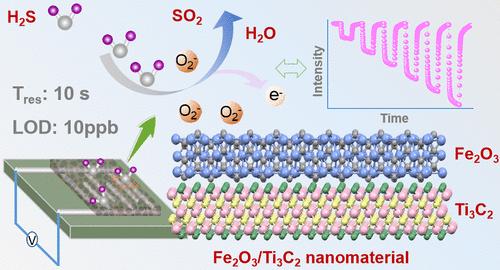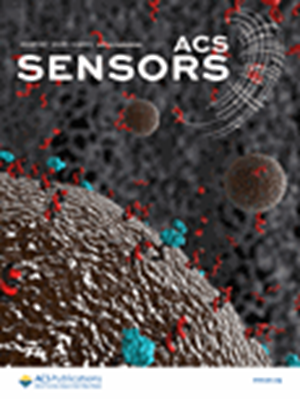High Performance H2S Sensor Based on Ordered Fe2O3/Ti3C2 Nanostructure at Room Temperature
IF 8.2
1区 化学
Q1 CHEMISTRY, ANALYTICAL
引用次数: 0
Abstract
The utilization of a heterogeneous nanojunction design has shown significant enhancements in the gas sensing capabilities of traditional metal oxide gas sensors. In this study, a novel room temperature H2S gas sensor employing Fe2O3 functionalized Ti3C2 MXene as the sensing material has been developed. This sensor exhibits a broad detection range (0.01–500 ppm), low detection limit (10 ppb), and rapid response/recovery times (10 s/15 s), making it ideal for ppb-level H2S detection. The exceptional gas sensitivity of Fe2O3/Ti3C2 composite to H2S can be attributed to several key factors. First, the unique layered frame structure of Fe2O3/Ti3C2 significantly amplifies the surface area of the hybrid material, enhancing the absorption and diffusion capabilities of H2S molecules. Second, the abundance of functional groups (–O, –OH, and –F) on the surface of Ti3C2 MXene nanosheets provides additional active sites for H2S adsorption, The density functional theory calculation confirms that the adsorption energy of the Fe2O3/Ti3C2 composite for H2S (−2.93 eV) is significantly lower than that of pure Fe2O3 (−2.37 eV) and Ti3C2 (−0.2 eV). Lastly, the remarkable metal conductivity of Ti3C2 MXene ensures efficient electron transfer, thereby enhancing overall sensing performance.

求助全文
约1分钟内获得全文
求助全文
来源期刊

ACS Sensors
Chemical Engineering-Bioengineering
CiteScore
14.50
自引率
3.40%
发文量
372
期刊介绍:
ACS Sensors is a peer-reviewed research journal that focuses on the dissemination of new and original knowledge in the field of sensor science, particularly those that selectively sense chemical or biological species or processes. The journal covers a broad range of topics, including but not limited to biosensors, chemical sensors, gas sensors, intracellular sensors, single molecule sensors, cell chips, and microfluidic devices. It aims to publish articles that address conceptual advances in sensing technology applicable to various types of analytes or application papers that report on the use of existing sensing concepts in new ways or for new analytes.
 求助内容:
求助内容: 应助结果提醒方式:
应助结果提醒方式:


